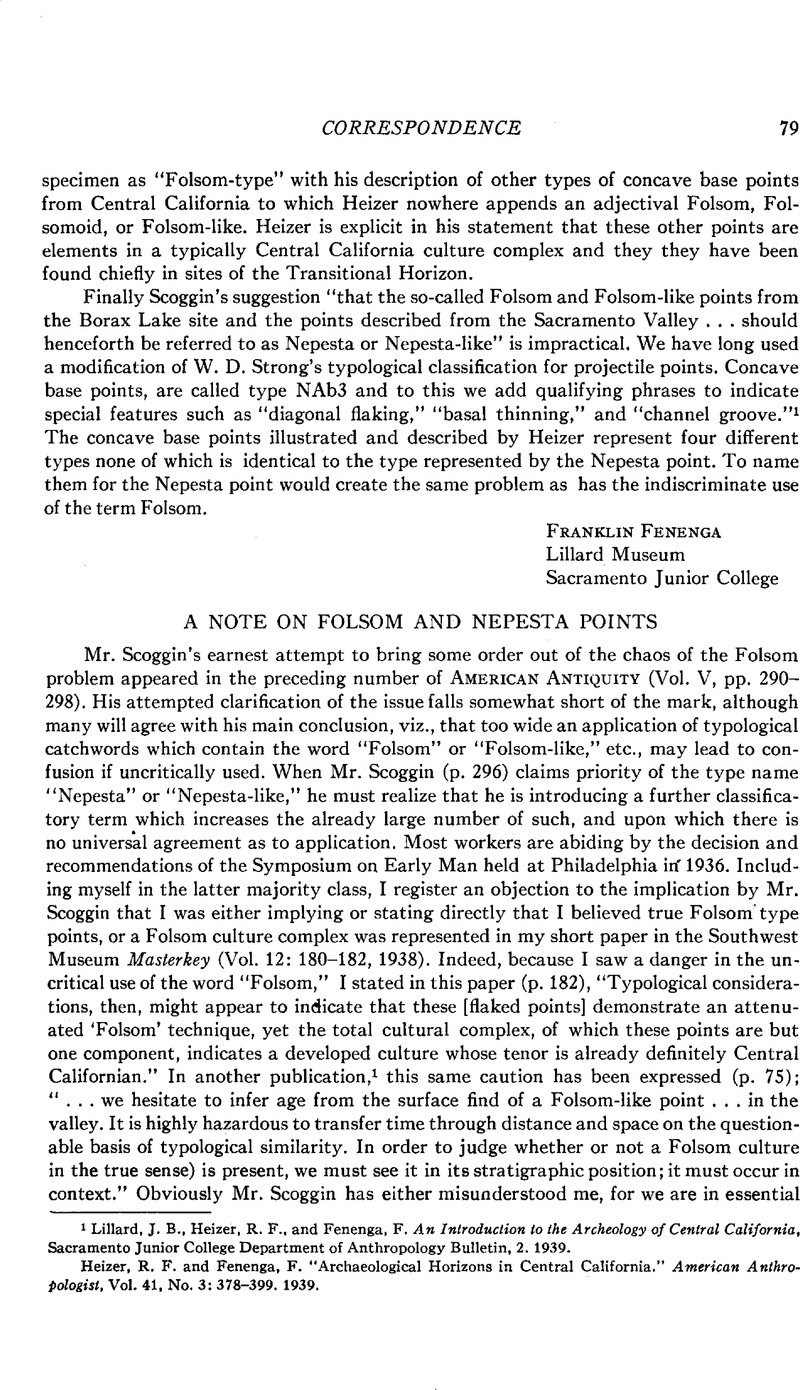Published online by Cambridge University Press: 01 July 1940

1 Lillard, J. B., Heizer, R. F., and Fenenga, F. An Introduction to the Archeology of Central California, Sacramento Junior College Department of Anthropology Bulletin, 2. 1939.
Heizer, R. F. and Fenenga, F. “Archaeological Horizons in Central California.” American Anthropologist, Vol. 41, No. 3: 378–399. 1939 CrossRefGoogle Scholar.
2 In this bulletin (see also the American Anthropologist 41: 378–399, 1939) we make no claim of having found a Folsom culture complex. By the same token, had we used the term Nepesta as a type name, we should not have claimed that it indicated the existence of a Nepesta culture. In other words, the critical point it not what term one uses, but how he uses it.
3 In addition to the references in Mr. Scoggin's paper, there is a short summary in the Carnegie Inst, of Washington News Service Bulletin 4: No. 31: 258–261. entitled “Early Man at Borax Lake.” F. H. H. Roberts, Jr. (“The Folsom Problem in American Archaeology.” Smithsonian Inst. Ann. Rept. 1938:531–546, 1939) has stated clearly (p. 544) the problems raised by the California data.